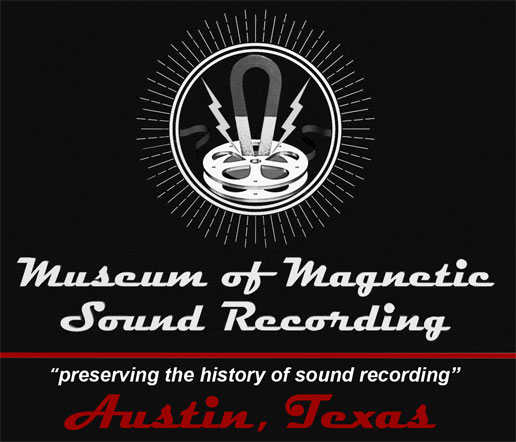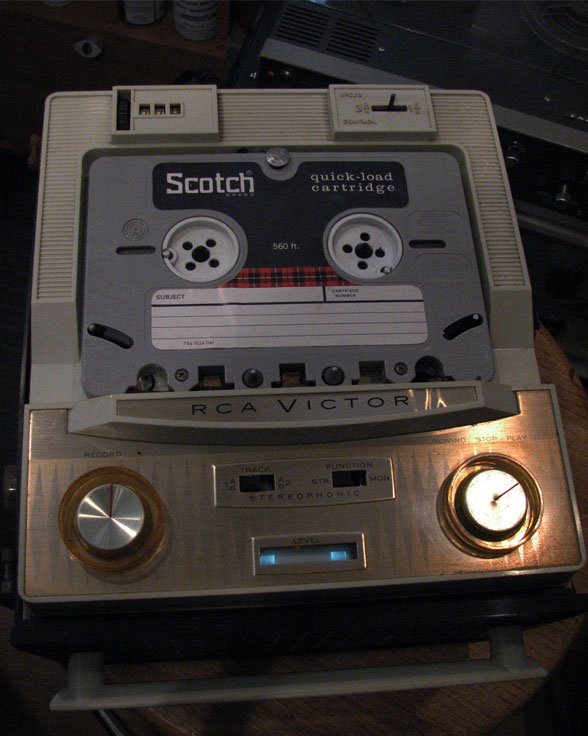
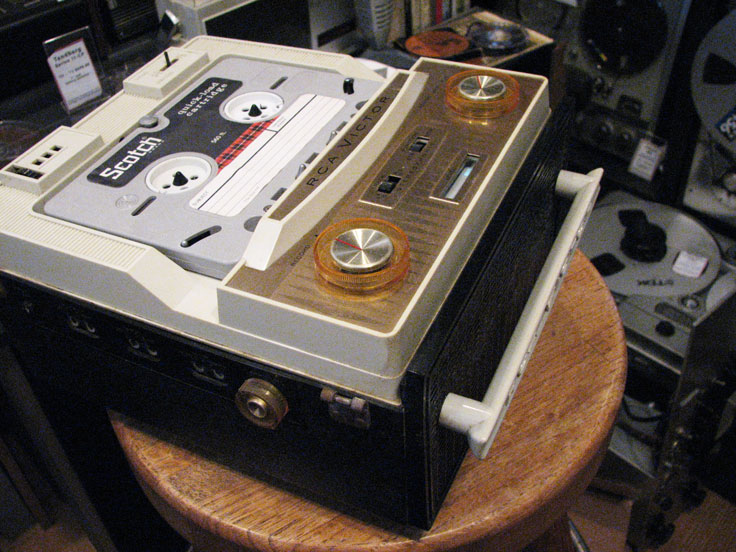

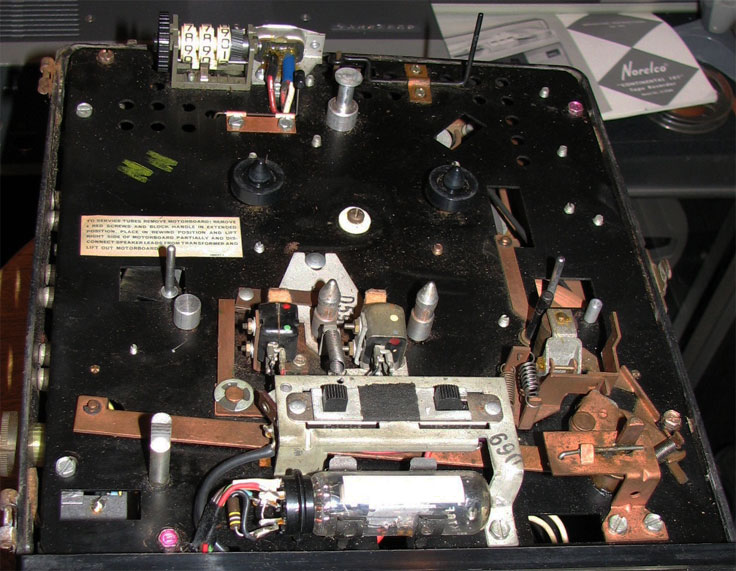
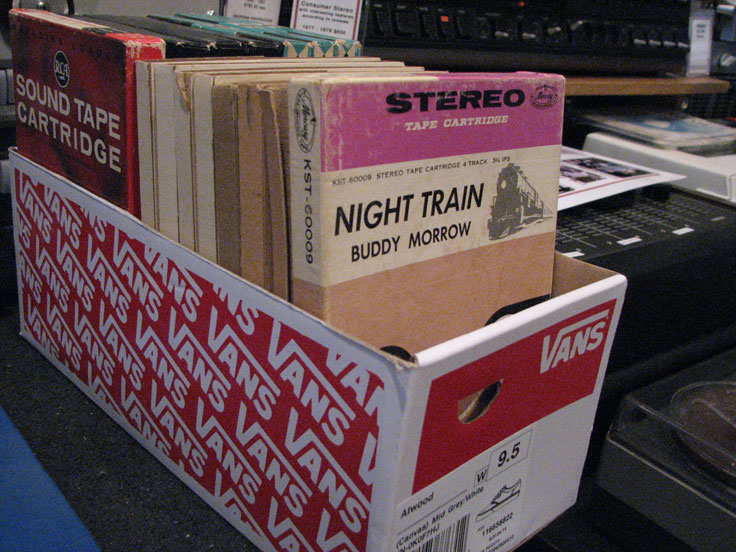
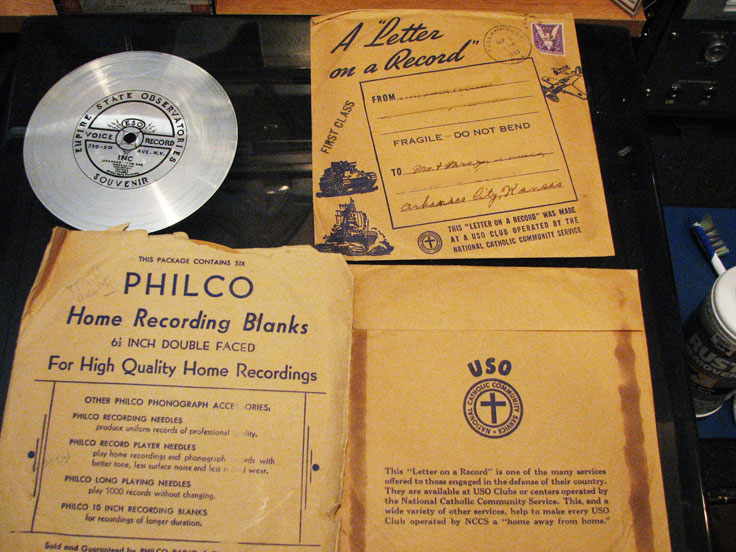
Collection of RCA cartridge tapes • USO "A Letter on a Record" with Philco Home Recording blanks and Empire State Building souvenir disk were all donated by Bruce Truitt
Wonderful old video about this recorder. Cartridge presentation begins at 7.5 minutes
The RCA tape cartridge (also known as the Magazine Loading Cartridge and Sound Tape) was a magnetic tape format designed to offer stereo quarter-inch reel-to-reel tape recording quality in a convenient format for the consumer market. It was introduced in 1958, following four years of development. This timing coincided with the launch of the stereophonic phonograph record.
The main advantage of the RCA tape cartridge over reel-to-reel machines was convenience. The user was not required to handle unruly tape ends and thread the tape through the machine before use, making the medium of magnetic tape more friendly to casual users. The same design concept would later be used in the more successful Compact Cassette which was invented by Philips in 1962. Because of its convenience, the RCA tape cartridge system did see some success in schools, particularly in student language learning labs.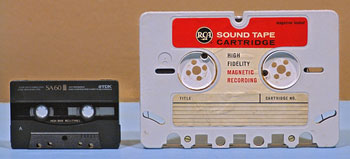
Size comparison of RCA tape cartridge (right) with the more common Compact Cassette
Similar to the Compact Cassette, cartridges were reversible and either side could be played. An auto reverse mechanism in some models allowed the tape to run continuously. The cartridge played at a standard speed of 3.75 IPS. This was half of the top speed of consumer reel-to-reel music recorders, which usually offered both 3.75 IPS and 7.5 IPS speeds. Such consumer reel-to-reel machines were capable of superior audio performance, but only at the faster speed.
The RCA tape cartridge format offered four discrete audio tracks that provided a typical playtime of 30 minutes per side of stereo sound, or double that for monophonic sound. Some models could also play and record at 1.875 IPS, doubling playing time with a significant reduction in sound quality. This speed was not practical for music, but fully acceptable for voice recording.
With two interleaved stereo pairs, the track format and speed of the RCA tape cartridge was fully compatible with the slower 3.75 IPS speed of consumer reel-to-reel stereo tape recorders. It is possible to dismantle the cartridge, spool the tape onto a reel, and play it on such a machine.
Unlike the later Compact Cassette, the RCA tape cartridge incorporated a brake to prevent the tape hubs from moving when the cartridge was not in the player. Small slot windows extended from the tape hubs toward the outside of the cartridge so that the amount of tape visible on each spool could be seen.
Despite its convenience the RCA tape cartridge was not a success. A factor in the failure of the system was that RCA was slow to produce machines for the home market. They were also slow to license pre-recorded music tapes for home playback. The format disappeared from retail stores by 1964.
The physical track width and speed of the tape and even the size of the RCA tape cartridge was similar to, though incompatible with, Sony's Elcaset system, introduced in 1976. That system also failed to achieve market acceptance and was soon withdrawn.
